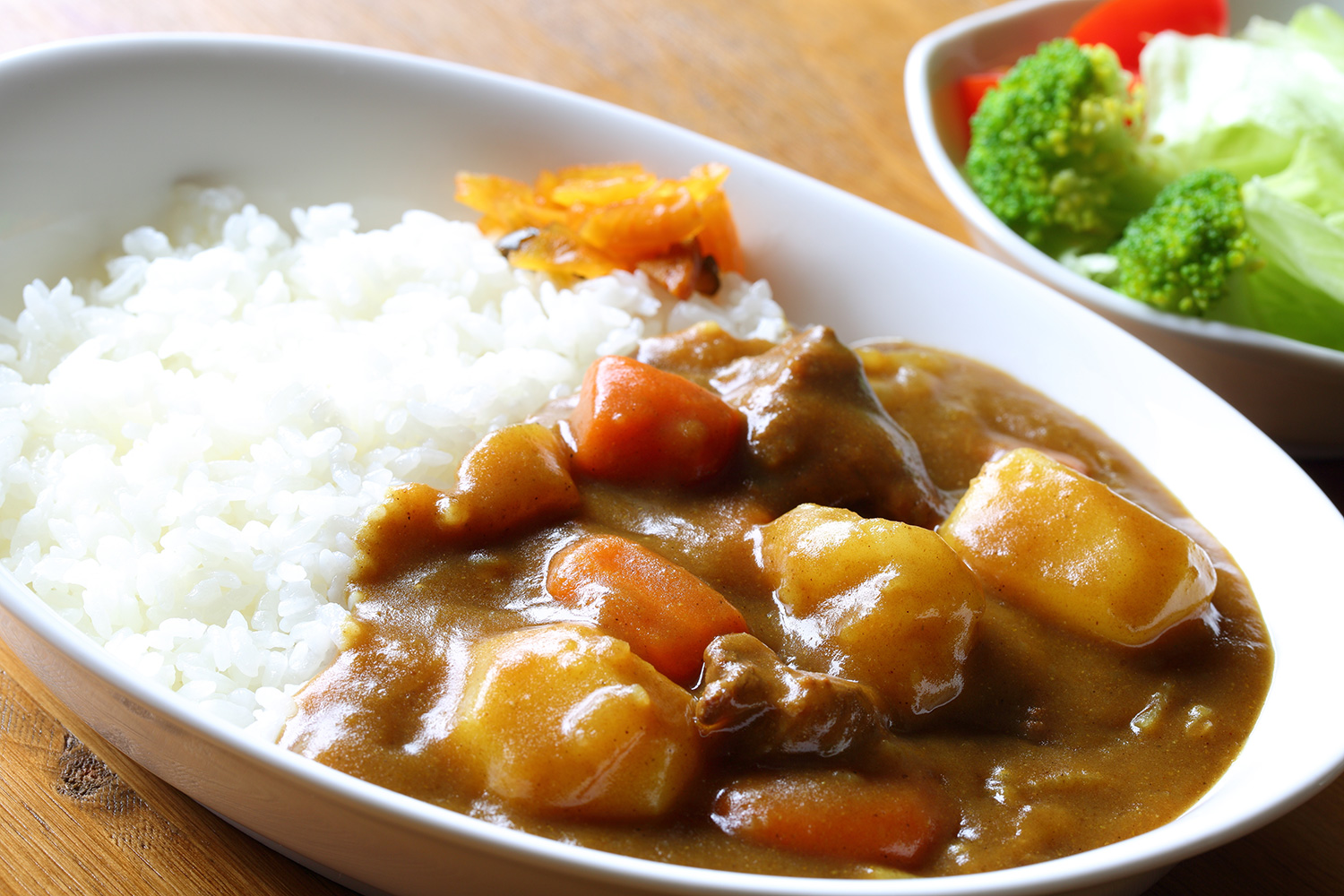

MASTER'S BOOK
CURRY WITH RICE – JAPANESE NATIONAL DISH
The history of karē raisu
Entangled in the history of Japanese curry are not only Indians but also the British. The latter, having taken the spice from the colonial India, have spread it all over the world, bringing it to the Country of Cherry Blossoms in the second half of the 19th century. The first Japanese recipes for dishes with curry come from 1872. Several years later, the dish started to appear in exclusive Japanese restaurants, After all, being brought by the British, curry was a luxury good that only few could afford in Japan. It was not until the 1950s, when a generally affordable curry paste in cubes appeared in shops, that kare raisu became a regular daily dish in Japanese homes.
How to make Japanese curry with rice?
Japan’s beloved dish differs from traditional Indian recipes. It is usually much less spicy than the original. The citizens of the Japanese islands prefer more delicate versions of the dish, often with delicate sweet notes. The recipe for Japanese has no rigid rules or strictly defined proportions. Curry, rice, vegetables and meat – this is the whole base for one of Japan’s national dishes. The rest depends on the cook’s imagination and the available ingredients. Roax made of flour and curry is used to pre-fry the meat (usually beef or poultry), with vegetables, such as potatoes, carrots or onions, added gradually. Rather than powder curry, Japanese like ready-to-use mixes in the form of cubes of varied spiciness and sweetness level. The sweetish taste of the dish enjoyed in Japan can also be achieved with honey, apple chunks, and even… chocolate.
Yōshoku – cuisine from the West
Contrary to traditional Japanese dishes, Japanese curry is eaten with spoon rather than wooden chopsticks. Its name is written down in katakana – the alphabet used to note down words of foreign origin. Both customs are characteristic of yōshoku – dishes borrowed from Western cuisines during the Meiji Restoration at the turn of the 20th century. Due to the role of the Englishmen in the introduction of karē raisu to Japanese tables, the dish – despite its Indian roots – is considered as representing yōshoku. Treats adopted from the West include for instance tonkatsu – a Japanese version of breaded cutlet, korokke – inspired by European croquettes, or Hayashi raisu, that is… Asian Beef Stroganoff with rice.
Contrary to European beliefs regarding the culinary customs in the Country of Cherry Blossoms, the curry borrowed from Indian cuisine is one of the favourite dishes of the Japanese. Matching Japanese tastes, the treat has become Japan’s national dish and a proof that Japanese cuisine is so much more than just sushi.























